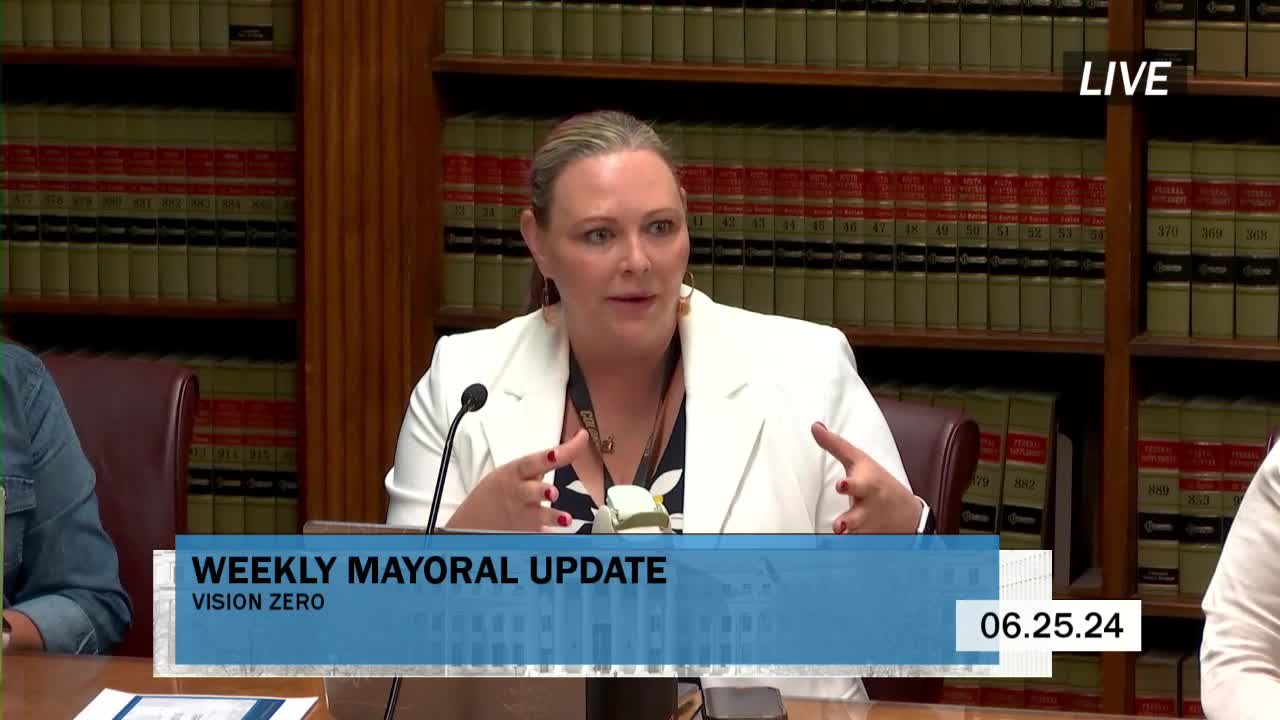City leaders confront urgent street safety crisis
June 25, 2024 | Denver (Consolidated County and City), Colorado

This article was created by AI summarizing key points discussed. AI makes mistakes, so for full details and context, please refer to the video of the full meeting. Please report any errors so we can fix them. Report an error »

During a recent government meeting, officials discussed pressing concerns regarding public safety and infrastructure, particularly focusing on the need for improved speed enforcement and street lighting in high-injury areas.
A key point raised was the inadequacy of the current fleet of mobile speed enforcement units. Officials acknowledged that while existing units are operational, they are outdated and insufficient for the city's needs. The conversation highlighted a shift towards automated speed cameras, which promise a more cost-effective solution for monitoring traffic speeds without the need for staff deployment. However, concerns were voiced about the lack of coverage for tier 2 high-injury networks, with one council member noting that residents are leaving their homes due to safety fears for their children crossing the street.
The discussion also touched on the urgent need for modern street lighting, particularly in areas with a history of fatal accidents. One council member cited three deaths on a specific street due to inadequate lighting, emphasizing that upgrading the lighting system would require significant investment—up to $1 million. This raised questions about how to prioritize and fund such critical infrastructure improvements alongside speed enforcement strategies.
Officials agreed on the importance of a comprehensive approach to safety that includes both speed enforcement and enhanced lighting. They acknowledged the need for a coordinated strategy that addresses the visibility and safety of pedestrians, particularly in high-risk areas. The meeting underscored the ongoing evaluation of safety measures and the necessity for continued investment in both mobile and fixed enforcement technologies to protect residents effectively.
A key point raised was the inadequacy of the current fleet of mobile speed enforcement units. Officials acknowledged that while existing units are operational, they are outdated and insufficient for the city's needs. The conversation highlighted a shift towards automated speed cameras, which promise a more cost-effective solution for monitoring traffic speeds without the need for staff deployment. However, concerns were voiced about the lack of coverage for tier 2 high-injury networks, with one council member noting that residents are leaving their homes due to safety fears for their children crossing the street.
The discussion also touched on the urgent need for modern street lighting, particularly in areas with a history of fatal accidents. One council member cited three deaths on a specific street due to inadequate lighting, emphasizing that upgrading the lighting system would require significant investment—up to $1 million. This raised questions about how to prioritize and fund such critical infrastructure improvements alongside speed enforcement strategies.
Officials agreed on the importance of a comprehensive approach to safety that includes both speed enforcement and enhanced lighting. They acknowledged the need for a coordinated strategy that addresses the visibility and safety of pedestrians, particularly in high-risk areas. The meeting underscored the ongoing evaluation of safety measures and the necessity for continued investment in both mobile and fixed enforcement technologies to protect residents effectively.
View full meeting
This article is based on a recent meeting—watch the full video and explore the complete transcript for deeper insights into the discussion.
View full meeting
